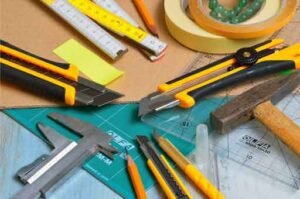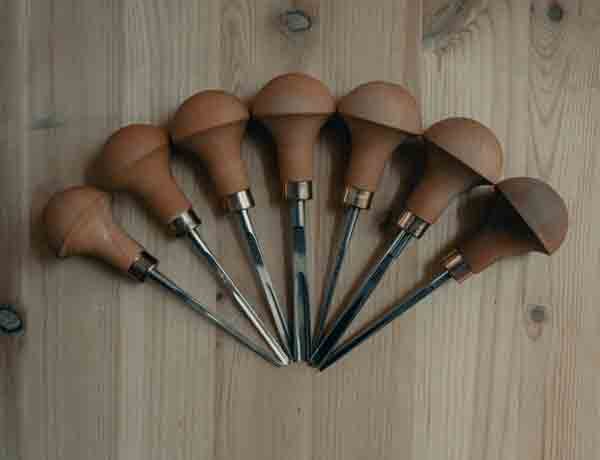

Relief printing is a printing technique where the design is raised above the surface of the printing plate. The design can be created by carving into the printing plate or using a raised typeface. When the ink is applied to the printing plate, it only sticks to the raised areas of the design. This technique is often used for block printing or lino cutting.
1 What is relief printing?
When it comes to printing, the term “relief” refers to a printing process in which the raised areas of a matrix are inked and the depressed areas are left uninked. This results in an image that is transferred to paper via pressure. In order for this to happen, the paper must be placed face-down on top of the inked surface.
There are two main types of relief printing: intaglio and planographic. Intaglio involves cutting away material from a metal plate in order to create depressions that will hold ink. The most common type of intaglio printmaking is an etching, but other techniques include engraving, aquatint, and drypoint. On the other hand, planographic relief printing includes techniques like lithography, where images are drawn on a stone or metal plate with greasy crayons or pencils and then treated so that only the drawing can accept ink. When it comes time to print, these areas are kept wet so that they repel the water-based ink while the rest of the matrix accepts it.
Relief printing was first used during China’s Tang Dynasty (618-906 CE). Woodblock prints were created by carving an image into a block of wood and then inking the raised surfaces before pressing it onto paper or fabric. This type of relief printing eventually made its way to Europe in the 14th century and was used for religious texts and playing cards.
2 The relief printing process
The relief printing process is a printing technique in which the image to be printed is raised above the surface of the printing plate. The raised areas of the printing plate are inked and then pressed against the paper, resulting in an image being printed on the paper. Relief printing is a type of intaglio printing, which means that the ink is held in grooves or depressions on the surface of the printing plate.
3 Relief printing press
In relief printing, the raised areas of the plate are inked while the sunken areas remain un-inked. The paper is then pressed against the inked areas, resulting in a transfer of ink to the paper. This type of printing is typically used for text and images with limited color variation.
Relief printing presses come in a variety of sizes and shapes, but all have the same basic components. The most common type of relief press is the platen press, which has a flat surface that the paper is laid on top of. The plate is then lowered onto the paper and both are passed through rollers, which transfer the ink from the plate to the paper.
Other types of relief presses include cylinder presses (which have a rotating cylinder that Transferring ink to paper.), clamshell presses (which open and close like a clam shell), and proof presses (which are smaller presses used for making test prints).
The main advantage of relief printing is that it is relatively simple and quick to set up. Relief plates can be made from a variety of materials, including woodcuts, linoleum cuts, or metal plates. This type of printing is also well-suited for small print runs and can be easily adapted to create unique prints with special effects (such as embossing or debossing).
4 Relief printing materials


There are a few materials you’ll need to get started with relief printing:
-A piece of linoleum or wood
-A carving tool
-A brayer
-Ink
-Paper
-A press (optional)
Linoleum and wood are both common substrates for relief printing. You can use either one, although linoleum is generally considered easier to carve. Whichever material you choose, make sure it’s smooth so that your carving tool doesn’t get stuck.
Your carving tool can be anything sharp and pointy, like a knife or an Exacto blade. Just make sure it’s clean so you don’t contaminate your substrate with dirt or debris.


The brayer is used to spread the ink evenly over the surface of your block. Ink is applied to the raised areas of the block, which will transfer onto the paper when printed. Choose an ink color that will contrast well with your paper choice.
The paper should be thick enough to withstand multiple printings without tearing, but thin enough that it won’t bog down the print process. Something like watercolor paper or Bristol board works well.
If you have access to a press, you can use it to apply even pressure when printing. If not, a simple rolling pin will do the trick. Just make sure whatever you use is clean so as not to transfer any unwanted debris onto your print.
5 The Best Relief printing techniques
There are a few different relief printing techniques, each with its own unique characteristics. The most common relief printing techniques are woodcut, linocut, and engraving.
Woodcut is the oldest and most basic relief printing technique. A piece of wood is carved away to create the image, and then the wood block is inked and pressed onto the paper. This results in a very distinctive, heavy line quality.
Linocut is similar to woodcut, but instead of carving into wood, the artist carves into a piece of linoleum. This results in a softer line quality than a woodcut.
Engraving is the most detailed and intricate of the relief printing techniques. An image is carved into a metal plate using a sharp tool called a burin. The plate is then inked and pressed onto paper, resulting in a very fine line quality.
6 Relief printing ink
Relief printing ink is a type of ink used in relief printing, a printing process where the raised areas of the printing plate are inked, while the recessed areas are left uninked. Relief printing inks are thick and viscous and are applied to the printing plate with a roller. The ink is then transferred to the paper by pressing the two together.
Relief printing inks come in a variety of colors, including black, white, and various shades of gray. They can also be mixed together to create custom colors. Relief printing inks dry quickly, which helps to prevent smudging during the printing process.
7 Relief printing artists
Some of the most famous relief printing artists hail from the United Kingdom, including William Blake and Eric Gill. Other notable artists who have used this technique include M. C. Escher, Pablo Picasso, and Joan Miró.
Relief printing is a printing technique where the artist sculpts an image into a block of wood or other material. The raised areas of the carving are inked, while the recessed areas are left uninked. Paper is then pressed onto the inked surface, resulting in a printed image.
This printing method is one of the oldest and most popular, as it allows for a wide variety of textures and tones. It is also relatively simple to execute, which has made it a popular choice among artists throughout history.
8 Relief printing vs intaglio
There are two main types of relief printing: intaglio and planographic. Intaglio prints are made by cutting into a metal plate, which is then inked and the ink is transferred to the paper. Planographic prints are made by drawing on the surface of the metal plate with a greasy pencil or another medium, which repels the water-based inks. The image is transferred to the paper by pressing it against the inked plate.
Relief printing is a form of printing where the image is raised above the surface of the printmaking plate. This can be done through either intaglio or planographic methods. With intaglio, lines are cut into a metal plate, which is then inked and transferred to paper. Planographic relief printing involves drawing on the surface of a metal plate with a greasy medium, which repels water-based inks. The image is transferred to paper by pressing it against the inked plate.
9 Tips for successful relief printing
There are a few key things to keep in mind when relief printing to ensure successful results. First, it is important to have a clean, smooth surface to print on. Second, the design should be simple and bold, with clear lines and shapes. Third, the printing block should be evenly inked and free of any debris. Finally, make sure to use firm pressure when printing to ensure a clear impression that.
YOU CAN BUY HAND-MADE BLOCK-PRINTED WALL HANGINGS AT OUR WEBSITE JOODY.ART
AND CAN READ MORE ART BLOGS ON OUR WEBSITE aT ART BLOGS